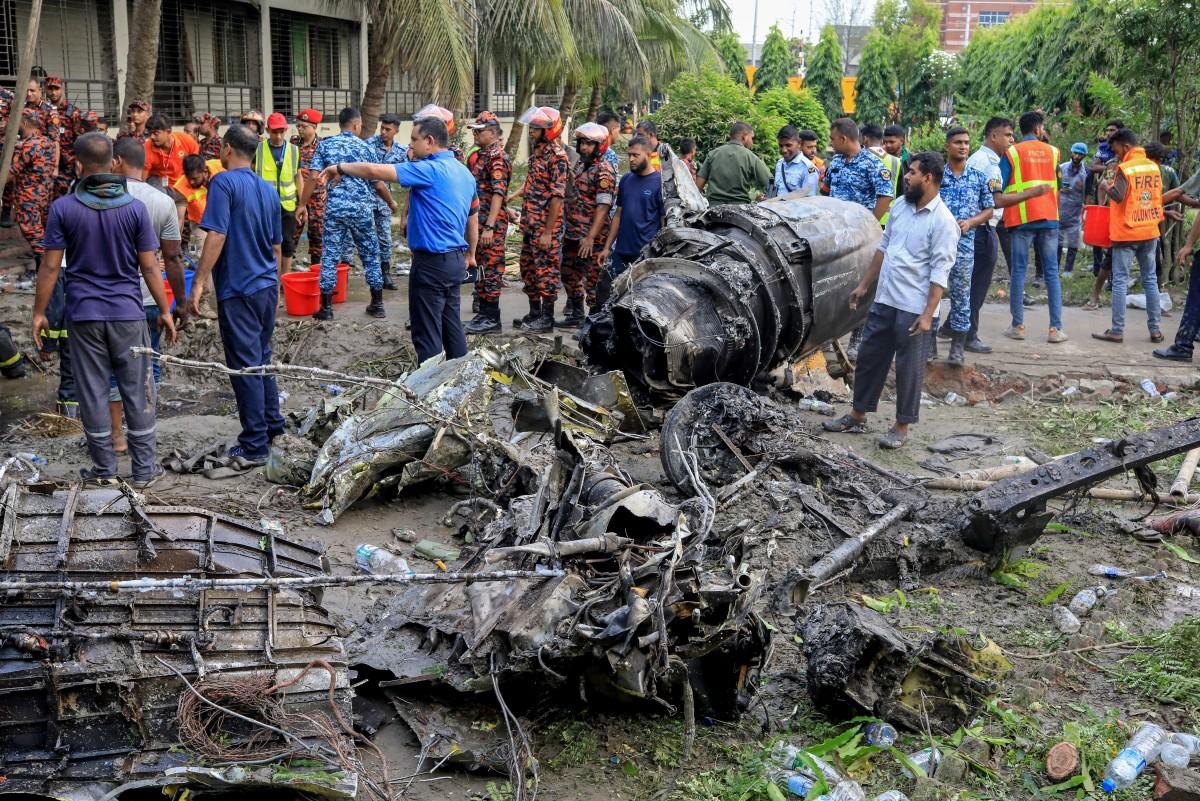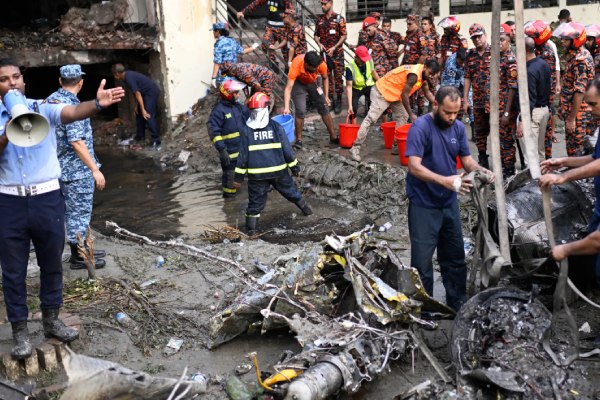As the death toll from a horrific fighter jet crash into a school in Dhaka rose to 31 on Tuesday, with the majority of those killed being children, grief in Bangladesh gave way to rage.
In a country already struggling with political instability, the tragedy has increased tensions and sparked widespread student protests.
During a normal training flight on Monday, the Bangladesh Air Force’s Chinese-built F-7 BGI fighter plane crashed into Milestone School and College, igniting the fire.
Children under the age of twelve who were just a few seconds away from going home made up at least 25 of the victims.
Also read: https://www.tvcnews.tv/at-least-16-dead-as-bangladesh-air-force-jet-crashes-into-dhaka-college/
Shortly after taking off from a nearby air base, the jet reportedly suffered a mechanical failure; the pilot, who also died, had tried to avoid populated areas.
Survivors and devastated families described scenes of horror and loss.

Read Also
The authorities reported 165 injuries and 31 fatalities on Tuesday, with 70 individuals still undergoing medical attention.
In the midst of burning debris, rescue efforts persisted while flags nationwide were flown at half-mast and special prayers were said in churches, mosques, and temples as part of a nationwide day of sorrow.
But soon the solemnity gave way to agitation. When officials visited the crash site, hundreds of students flocked to the streets to confront them.
They chanted calls for justice and questioned why old military planes were still being used close to civilian areas.
Student groups are calling for transparency in victim identification, compensation for families, and immediate reforms in the Air Force’s training operations.
In response, the interim administration led by Nobel laureate Muhammad Yunus issued a statement promising a full investigation, support for victims, and a review of flight training protocols in urban zones.
The F-7 BGI, the last in the Chengdu J-7 line, which is derived from the Soviet MiG-21, was delivered to Bangladesh between 2011 and 2013. Its continued use is now at the centre of public scrutiny.
The crash comes just weeks after India suffered its deadliest aviation disaster in over a decade, further intensifying concerns about air safety in South Asia.
Meanwhile, Bangladesh’s political landscape remains fragile, with Yunus’s interim government pledging elections next year following the ouster of former Prime Minister Sheikh Hasina in August amid mass protests.
For many in Dhaka, the tragedy has laid bare not only institutional failings, but a growing sense of national anxiety.





